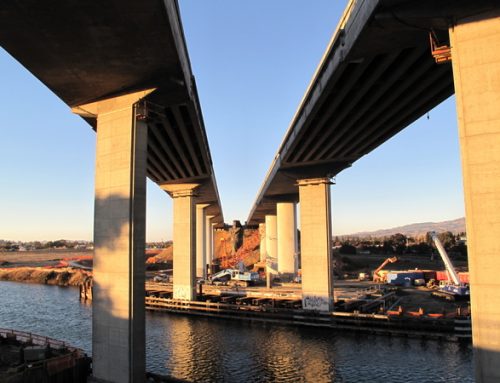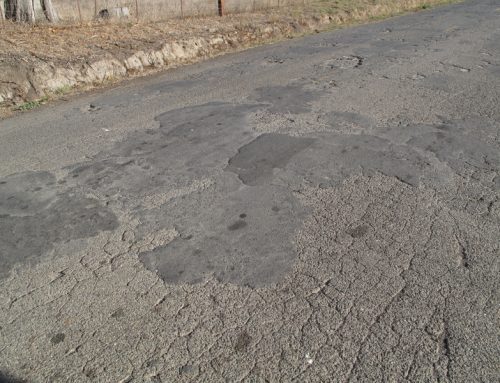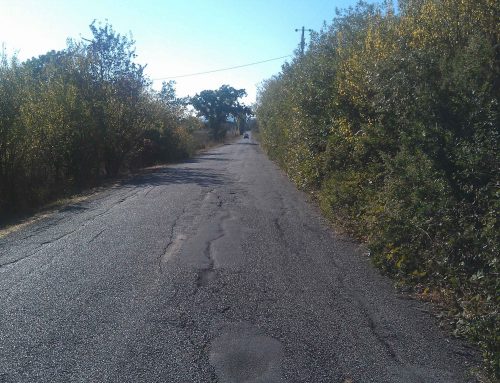Sonoma County’s crumbling roads, among the worst in the state, are finally set to get some more attention.
A pair of county supervisors released the first draft of a long-awaited plan to repair more than half of the 1,382-mile county road network within a decade.
The Board of Supervisors is scheduled to discuss the plan Tuesday, with time set aside for public comment. Over the next month, the county is looking to craft a final plan that includes a way to pay for the backlog of repairs, now pegged at $268 million.
Potential funding sources include more spending from the county’s general fund, financing strategies such as selling bonds and a potential quarter- or half-cent sales tax, said David Rabbitt, chairman of the Board of Supervisors.
“It’s really about cobbling together different sources of funds,” said Rabbitt, who, along with Supervisor Mike McGuire, made up the ad hoc committee studying the issue.
Rabbitt made much of the county’s move to tackle the issue, one of its most chronic service shortfalls, exacerbated by years of neglect and insufficient funding.
“It’s unprecedented for the county to have a plan to tackle 800 miles of county roads,” Rabbitt said.
Still, the plan is partly a political response to the firestorm of criticism that county officials have faced at least since 2010, when they raised the possibility that some of the most degraded rural roads would deteriorate back to gravel if nothing was done.
Interim efforts have sought to keep many of the best or most traveled parts of the road network from getting any worse.
For the past three years, the county has allocated an additional $8 million to fix about 40 miles per year of dilapidated roads important to tourism and agriculture. The long-term plan would bring up to good condition an additional 700 miles of roads.
“Improving and reinvesting in our roads is a top priority for the Board of Supervisors,” McGuire said. “We have been committed to taking on this legacy problem.”
The county road network fell into disrepair as road funding was steadily cut over the last two decades, county transportation officials say.
A state gasoline tax distribution formula has hurt counties like Sonoma with larger road networks and fewer cars than small, urban counties, officials say. And road maintenance was not given precedence during the recession, when, faced with reduced property tax revenues, the county, like most governments, was struggling to pay for other core services.
The result has been continued deterioration of pavement throughout a road network that has consistently ranked among the worst among Bay Area counties and statewide.
County officials previously estimated the maintenance backlog at more than $920 million, but a new mile-by-mile survey resulted in the lower figure of $268 million.
County officials said the dramatically lower estimate is the result of a more thorough survey.
The long-term plan would chip away at the backlog through repairs to major collector roads, like Old Redwood Highway, River Road and Stony Point Road. It would also focus on 500 miles of rural roads deemed important to regional travel. An additional 250 miles of local streets in communities such as Larkfield, Penngrove and Graton would receive some repairs under the plan.
The remaining 560 miles of roads in the county network — 41 percent of the total — are in the most rural areas and would be addressed only when funding becomes available or when emergency repairs are needed, according to the plan.
Rabbitt defended the approach.
“Within a reasonable amount of time, to have 60 percent of our roads repaired is phenomenal,” he said. “It’s going to take commitment. We’re on the verge of that.”
The Board of Supervisors will hold a study session on the roads plan within the next few weeks, Rabbitt said. Among the issues to iron out is a strategy to fund the plan.
Consulting firm Harris and Associates, which helped compile the roads document, studied the possibility of quarter- and half-cent sales taxes to fund road repairs. A quarter-cent sales tax would provide the county with $8 million annually for roads while a half-cent sales tax would add $16 million, according to the plan. The current annual county spending on road upkeep is about $16 million.
Voters would have to approve a sales tax measure. The deadline to put a measure on the November ballot is Aug. 8.
Sonoma County residents already have two quarter-cent sales taxes that pay for transportation infrastructure projects, including highway widening, commuter rail and local road improvements.
Road funding advocates, who have been vocal in calling for the county to improve pavement conditions, welcomed the long-term plan. They withheld comment on funding measures, including the proposed sales tax, saying they awaited further details.
“We’re glad that it’s seen the light of day,” said Craig Harrison, co-founder of the group Save Our Sonoma Roads. “There’s some work to be done on this. We may not end up with a perfect road system but it will be a lot better than what we have.”



